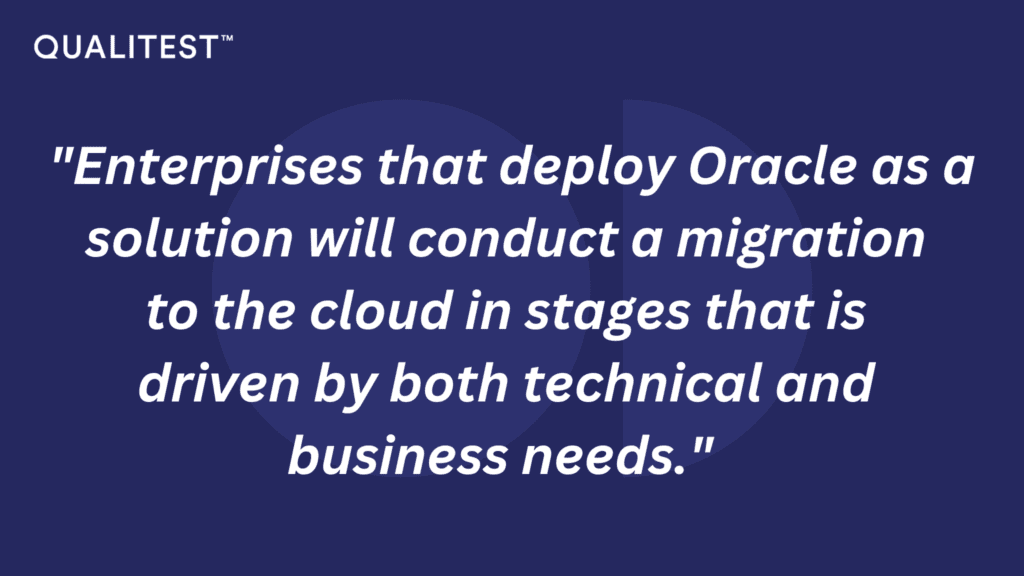How Enterprises Can Successfully Migrate to the Cloud From On-Premise Solutions
-
May 23, 20237 min read
The value of the cloud has long been established, with many enterprises across all industries having already made the leap into transitioning from on-premise solutions. A successful migration project will involve the movement, of applications, data and other IT services from on-premise into the cloud. There are varying degrees of cloud migration, and not every enterprise that undertakes a migration strategy does so by transferring its data to the cloud in one go.

But what are the challenges of migrating to the cloud from on-premise solutions, and how can this be done successfully? There are often challenges in both enterprise resource planning (ERP) implementations and ERP testing.
When planning a successful migration from on-premise solutions to the cloud, some of the challenges that will often arise include:
There are also various challenges when it comes to ERP testing, and these include:
Migrating from on-premise to the cloud can be a complex process, but it can be achieved successfully by following some key steps:
· Define your migration strategy: Consider the goals of your migration, such as improving performance, reducing costs, or
increasing scalability, and decide on the best approach for achieving them.
· Assess your current environment: Assess your current IT environment and identify which applications and workloads are best suited for the cloud. Determine any potential roadblocks and risks that may affect the migration process.
· Check for any compatibility issues: conduct a thorough check for any compatibility issues that may arise, such as whether on-premise versions and cloud versions are supported, and whether there is backward/forward compatibility support with ERP vendors.
· Plan the migration: Create a detailed migration plan that outlines the steps involved in the migration process, including timelines, resources, and responsibilities. Identify any dependencies and prioritize which applications and workloads will be migrated first. Also, define a strategy for failover plan if the migration fails.
· Test the migration: Before migrating any critical applications or workloads, test the migration process thoroughly to ensure it works as intended. Identify and address any issues or bugs that may arise during the testing phase. Stubs /mocks may need to leverage for testing the integrations to reduce the dependency on making calls to third party systems.
· Beta test the migration: Before conducting the full-scale migration, roll out the migration with Canary deployment or A/B testing to understand the impact, risk and failover strategies.
· Conduct the migration: Once you have tested the migration process, begin migrating your applications and workloads to the cloud. Monitor the migration process closely to ensure that everything is running smoothly.
· Optimize and refine: Once the migration is complete, optimize and refine your cloud environment to ensure that it meets your performance and security requirements. Continuously monitor your environment and make adjustments as needed.
There are many reasons why enterprises should consider migrating from on-premise solutions to the cloud, and doing so offers a range of benefits that can help enterprises operate more efficiently, scale more effectively and reduce their costs.
Some of the key benefits of undertaking such a migration include:
Cost savings: Migrating to the cloud can help to reduce on-premise infrastructure spend and predicable costs based on usage, along with eliminating hardware refresh and capacity planning vicious cycles.
Innovation improvements: New apps can be deployed quickly to help accelerate business transformation and innovation, and oracle apps siloes with disparate on-premise hardware can be brought into a single cloud infrastructure.
Transformation: Infrastructure-as-a-service (IaaS) can provide instant access to resources and get rid of infrastructure procurement headaches. It also enables enterprises to focus on strategic priorities, not managing hardware and software.
Performance benefits : Predictable performance supports workloads from cloud-native to mission critical apps and databases in the Oracle cloud. In addition, next-generation IaaS performance matches and often exceeds on-premise deployments.
Migrating from on-premise solutions to the cloud opens up a new world for enterprises, but any migration requires careful planning and execution. Enterprises can successfully migrate to the cloud and take advantage of the many benefits it offers. From improved scalability and cost savings to enhanced security and flexibility, migrating to the cloud can help enterprises stay competitive in today’s rapidly evolving digital landscape.